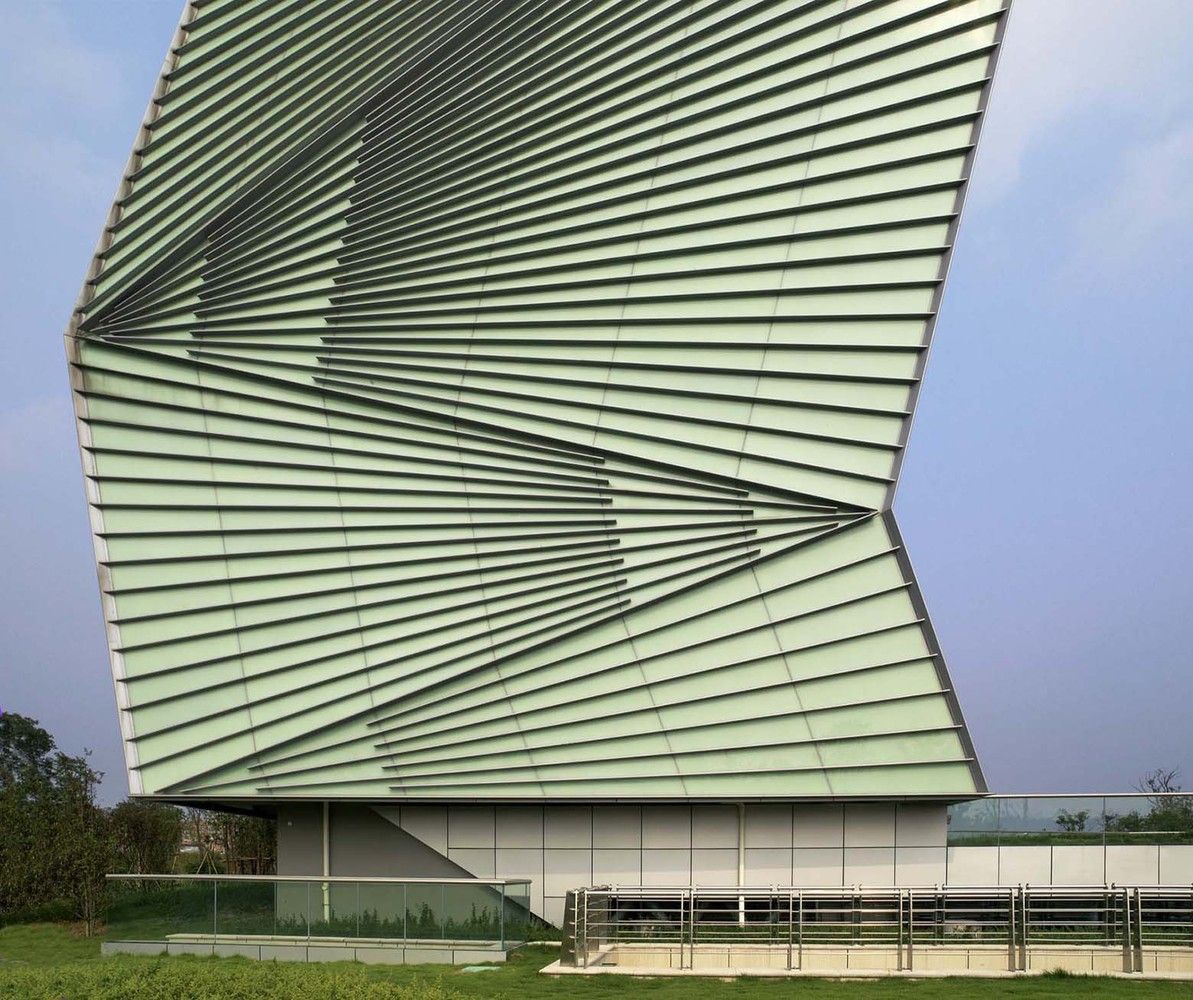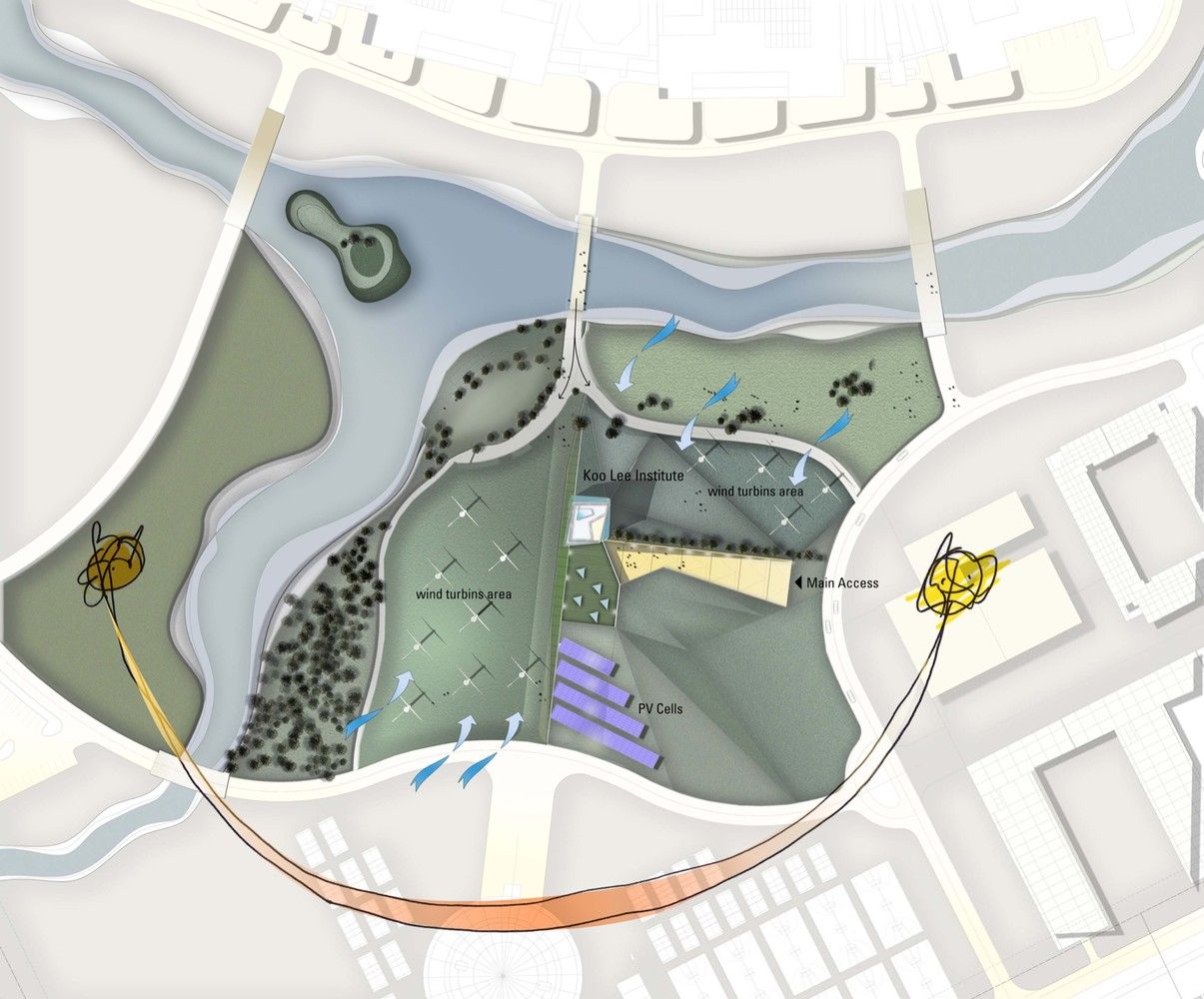The Centre for Sustainable Energy Technology (CSET), located at the Nottingham Ningbo campus in Ningbo, China, and designed by Mario Cucinella Architects, is meant to act as an exemplar building for the forward-looking objectives embodied within the school. These ideals are described on the school’s website as,
The mission of the Centre for Sustainable Energy Technologies (CSET) is to provide solutions to problems arising from sustainability issues relating to the environment, engineering and technology and thus supports continuing endeavours to improve the ecology. CSET’s activities cover both experimental and theoretical investigations in well equipped research laboratories. The Centre also aims to carry out postgraduate courses and to attract funding from outside sources for training programmes and short courses and to participate in network and public awareness activities.
The Centre’s unique, dynamic form offers something interesting to behold visually as well as offering the building an amount of structure and rigidity- independent of the structural frame, enabling the over all structural system to be more economical. The building with its visitors centre, laboratories, and specialized classrooms as well as the surrounding secondary structures, were constructed using state-of-the-art techniques for environmentally responsible and sustainable construction.
As part of the building’s exemplary purpose, its aim is to minimize the impact it has on its site and surroundings through a multi-faceted approach. It was constructed using locally sourced materials with low embodied energies. The power used within the research center comes not from a conventional grid but is generated by the school from renewable sources. In a similar mind, the school does not use conventional heating/cooling but looks to renewable sources for this too (namely a large Venturi Stack central atrium and geothermal heating/cooling acting on the ground floor’s thermal mass), saving 50%-100% of the energy using in conventional buildings. Rainwater storage facilities and grey-water recycling help decrease the aquatic footprint of the center and in conjuncture with efforts to foster the site’s natural ecology and biodiversity, to encourage the growth which is natural, not growth which shows itself to be reeling from human invasion.



























© Mario Cucinella Architects



